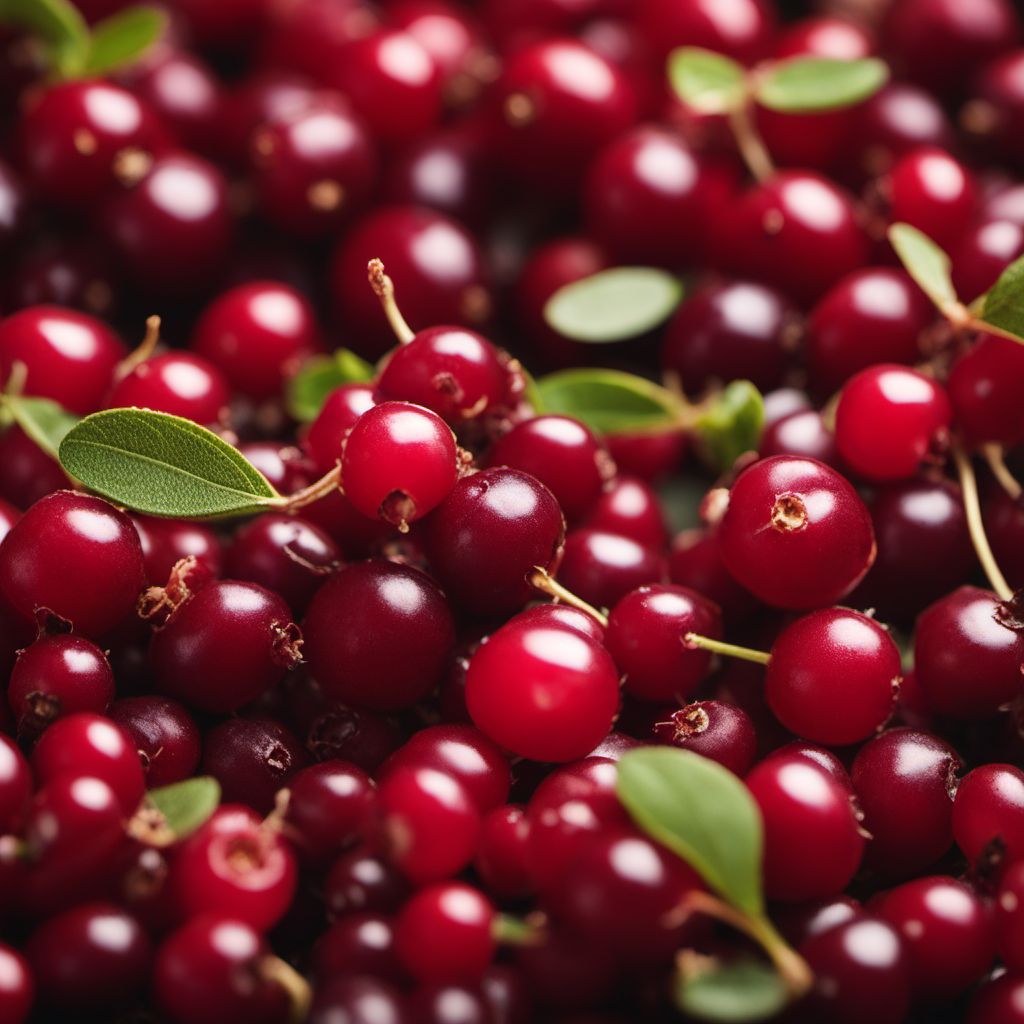
Ingredient
Lingonberries and similar
The Tart and Tangy Delights: Exploring Lingonberries and Similar Berries
Lingonberries and similar berries are small, round fruits that typically grow in clusters on low-lying shrubs. They have a bright red color and a slightly translucent appearance. The berries are known for their tart and tangy flavor, which is often compared to cranberries or sour cherries. Lingonberries have a firm texture with a slight crunch, while similar berries may vary in texture. These berries are commonly used in both sweet and savory dishes, adding a delightful balance of acidity to recipes.
Origins and history
Lingonberries are native to the northern regions of Europe, particularly Scandinavia, where they have been a staple ingredient for centuries. They have a rich cultural history and are often associated with traditional Scandinavian cuisine. Similar berries, such as cranberries and lingonberry relatives like partridgeberries and foxberries, are found in North America and other parts of the world. These berries have been used by indigenous communities for their culinary and medicinal properties.
Nutritional information
These berries are packed with beneficial nutrients, including vitamin C, vitamin E, antioxidants, and dietary fiber. They are also low in calories, making them a healthy addition to any diet.
Allergens
There are no known allergens associated with lingonberries and similar berries.
How to select
When selecting lingonberries or similar berries, look for plump, firm fruits with a vibrant red color. Avoid berries that are soft, mushy, or discolored. Fresh berries should have a slightly glossy appearance and should not have any signs of mold or spoilage.
Storage recommendations
To maintain the freshness and quality of lingonberries and similar berries, store them in the refrigerator in a breathable container or a perforated plastic bag. They can be kept for up to two weeks. For longer storage, lingonberries can be frozen, either whole or in puree form.
How to produce
Lingonberries and similar berries can be grown in home gardens or containers. They prefer acidic soil and thrive in cooler climates. Planting lingonberry shrubs or cranberry vines in well-draining soil with partial shade can yield a bountiful harvest.
Preparation tips
Lingonberries and similar berries can be used in a variety of ways. They are commonly made into jams, jellies, sauces, and compotes. They can also be used in baked goods, desserts, salads, and as a topping for pancakes or waffles. To balance their tartness, lingonberries are often sweetened with sugar or honey. When cooking with lingonberries, it is important to note that they retain their shape and texture even after being heated.
Substitutions
If lingonberries or similar berries are not available, cranberries can be used as a substitute due to their similar tartness and flavor profile.
Culinary uses
Lingonberries and similar berries are widely used in Scandinavian cuisine. They are commonly served with meat dishes, such as Swedish meatballs or roast pork, to provide a tangy contrast. Lingonberry jam is a popular accompaniment to breakfast dishes like porridge or toast. These berries can also be used in desserts, such as pies, tarts, and cakes, or incorporated into salads for a burst of flavor.
Availability
Lingonberries are commonly found in Scandinavia, particularly in Sweden, Finland, and Norway. Similar berries like cranberries are widely available in North America, particularly in the United States and Canada.
